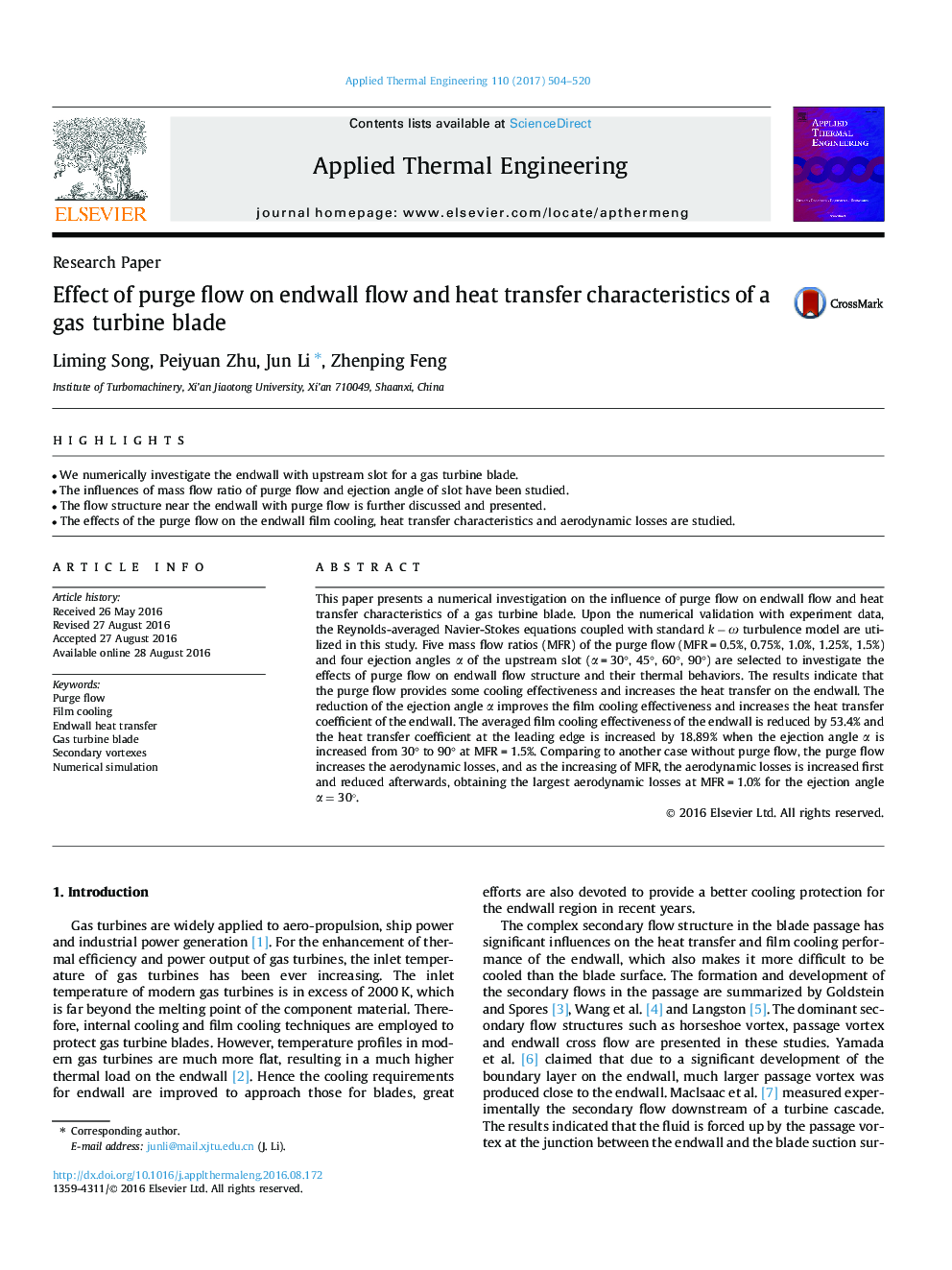| Article ID | Journal | Published Year | Pages | File Type |
|---|---|---|---|---|
| 4992037 | Applied Thermal Engineering | 2017 | 17 Pages |
Abstract
This paper presents a numerical investigation on the influence of purge flow on endwall flow and heat transfer characteristics of a gas turbine blade. Upon the numerical validation with experiment data, the Reynolds-averaged Navier-Stokes equations coupled with standard k-Ï turbulence model are utilized in this study. Five mass flow ratios (MFR) of the purge flow (MFR = 0.5%, 0.75%, 1.0%, 1.25%, 1.5%) and four ejection angles α of the upstream slot (α = 30°, 45°, 60°, 90°) are selected to investigate the effects of purge flow on endwall flow structure and their thermal behaviors. The results indicate that the purge flow provides some cooling effectiveness and increases the heat transfer on the endwall. The reduction of the ejection angle α improves the film cooling effectiveness and increases the heat transfer coefficient of the endwall. The averaged film cooling effectiveness of the endwall is reduced by 53.4% and the heat transfer coefficient at the leading edge is increased by 18.89% when the ejection angle α is increased from 30° to 90° at MFR = 1.5%. Comparing to another case without purge flow, the purge flow increases the aerodynamic losses, and as the increasing of MFR, the aerodynamic losses is increased first and reduced afterwards, obtaining the largest aerodynamic losses at MFR = 1.0% for the ejection angle α=30°.
Related Topics
Physical Sciences and Engineering
Chemical Engineering
Fluid Flow and Transfer Processes
Authors
Liming Song, Peiyuan Zhu, Jun Li, Zhenping Feng,
